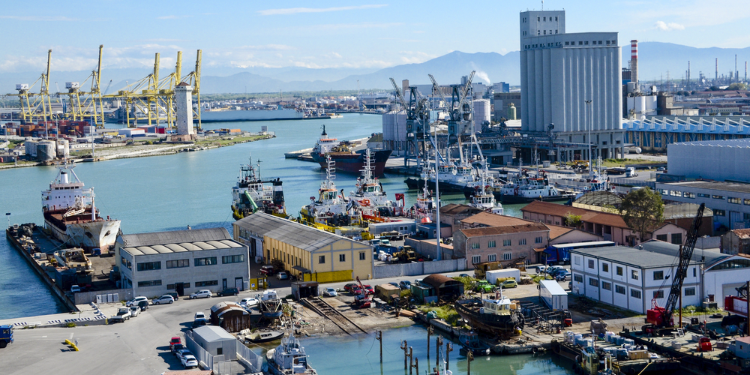Italy's attempt to address labor shortages
Labor shortages are affecting many European and world economies, and Italy is no exception. The country is thus looking to address the issue by raising its quota of work permits for non-EU foreigners, with 82,705 planned intakes. The new decree on migration flows, which was approved by the Italian government in December 2022, only came into effect on January 26, while 67,000 such permits were issued in 2022. Several sectors under pressure are being targeted by the decree, namely construction and building, road transport, hotels and tourism, shipbuilding, food processing, telecommunications, and mechanics.
Of the 82,705 work permits, 44,000 are specifically intended for seasonal employment, of which approximately 22,000 are for agriculture. The government is considering just over 30,000 permits for non-seasonal jobs, particularly in the tourism, construction, and road transport sectors. To meet these objectives, the country has entered bilateral agreements on immigration with some 30 countries, including Algeria, Ivory Coast, Japan, Mauritius, Sudan, Tunisia, Ukraine, Ghana, South Korea, Moldova, India, and Morocco.
What are the opportunities for expats in Italy?
Three main sectors contribute to the growth of the Italian market: services, construction, and agriculture. In each of these areas, there are varying degrees of labor shortages. In some sectors, such as shipbuilding, the labor shortage is particularly critical. But there are also sectors that are not listed in the Decree on Migration Flows, which are in short supply of workers.
Other sectors needing foreign talent in Italy
Italy lacks dentists, health and paramedical professionals, computer scientists, physicists, and experts in mathematics, science, and physics. The mechanical and repair sectors are also short of workers, as are the textile, information, and communication technology (ICT), energy, craft, and industrial sectors. In fact, most sectors are affected by labor shortages.
On the other hand, there is an ever-growing green economy in many parts of the world. It is a cross-sectoral industry that provides employment in many areas. However, in Italy, the growth may be hampered by a lack of human resources. Some positions, like architects specializing in sustainable architecture, installers of low-impact air conditioning systems, lawyers specializing in environmental law, eco-designers, electronics engineers, and software designers, are in high demand.
According to forecasts, the ICT sector will also need to hire some 40,000 professionals within 5 years (forecasts 2022-2026). The finance sector is expected to recruit between 120,000 and 130,000 professionals, and the building industry (construction, architecture, building engineering, etc.) is looking to hire 50,000.
Nearly 40% of the job vacancies in 2022 are still in unfilled. Textiles, ICT, metallurgy, clothing and footwear, mechatronics, and wood and furniture are the most affected sectors. It's worth noting that 45.5% of vacancies require a university education, while 43.5% of positions require a technical degree, and / or specific professional training. The bottom line? Italy has a serious shortage of qualified professionals.
The Italian paradox
This is something that has been observed even before the Covid-19 pandemic. Ever since 2019, major shipbuilding companies have sounded the alarm on their difficulty in recruiting young people. Fincantieri, one of the world's leading shipbuilding groups, which is already struggling to recruit in Italy, announced that it would require 6,000 technicians over the next three years. According to the group, it's easier to find skilled labor overseas. In 2023, the pressure is still very high in this sector that fails to attract young people. The current situation is, therefore, quite challenging for the Italian government.
The unemployment rate in Italy remains stable at around 7.8% (November 2022), while the average in the eurozone stands at 6.5%. This rate is particularly higher among young Italians. Even if the unemployment rate of 15–24-year-olds has dropped slightly (-0.6%), it remains very high (23%). According to employers and trade unions, the problem is a lack of investment by the government in vocational training. Back in 2019, there were already concerns about the brain drain. Nearly 300,000 young graduates left Italy during the past five years. The real challenge is retaining these young people, considering the demographic crisis due to an aging population and the labor shortage.
A move that looks like a new immigration policy
The Meloni government, born from the alliance between Fratelli d'Italia (Meloni's post-fascist party), La Lega (Salvini's far-right party) and Forza Italia (Berlusconi's right-wing party), half-heartedly admits its urgent need for foreign talent. Although they are known for their racist rhetoric and hard-line migration policies, they have come to the conclusion that immigration are essential for sustainable growth and to respond to the demographic crisis. Is this some kind of mea culpa?
This is not the first time that Italy has been confronted with reality! In 2020, the government announced its intention to regularize 600,000 undocumented migrants to deal with severe labor shortages in the agricultural sector. In 2021, 69,700 work permits were granted to cope with economic reconstruction. In 2022, the construction sector needed 260,000 workers, but the Italian government only trained 3,000 of them. Other analysts stress that the positions affected by the decree are not the most lucrative ones.
Instead, the government is highlighting the new forecasts of the Bank of Italy, which ultimately set the country's growth rate for 2022 at 3.8% instead of 3.3% from previous estimates. This is a slight improvement, which somewhat reduces the risk of recession. The Bank of Italy is optimistic for 2023 and expects growth of +0.6%, or 0.2 points more than in December 2022.
Useful links:
Get the Sistema Pubblico di Identità Digitale (SPID) – digital recognition system
Italian Ministry of the Interior: applying for a work permit (website in Italian)
















